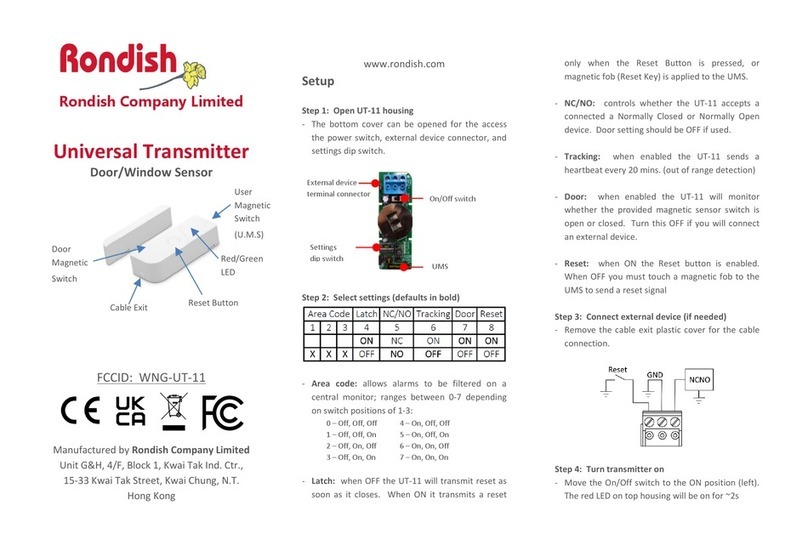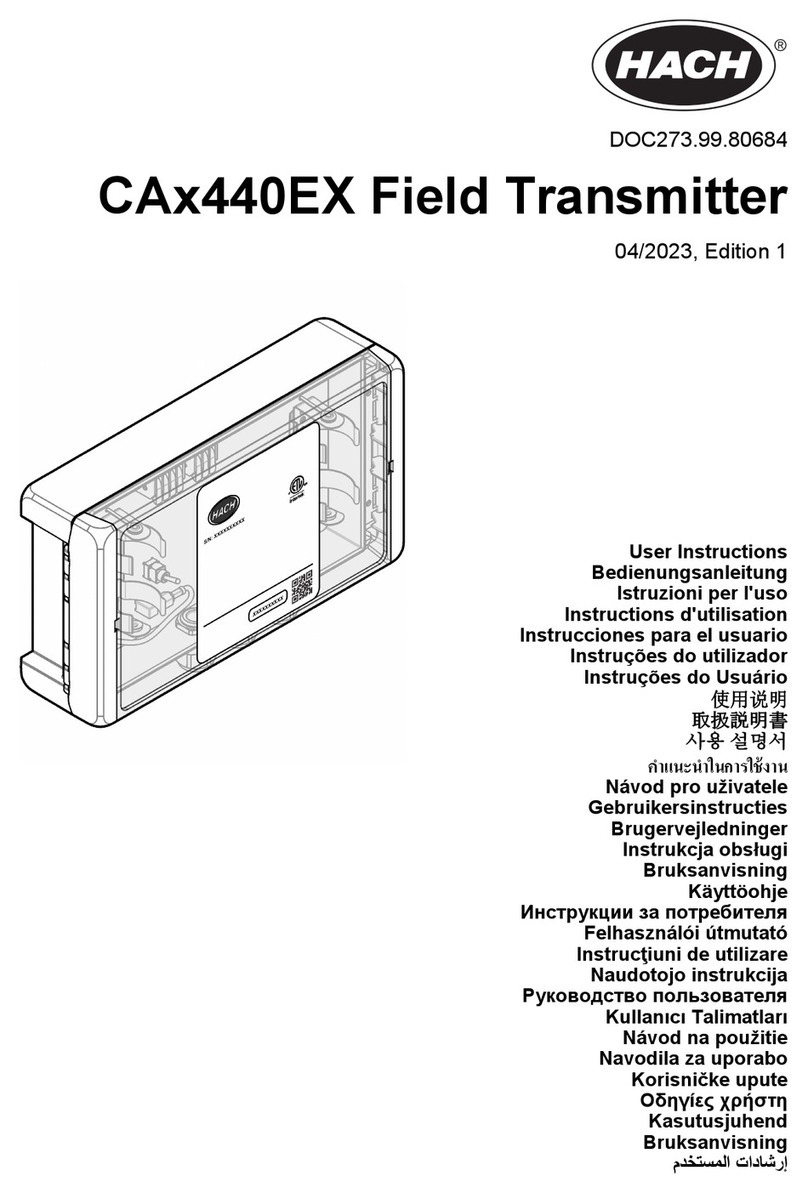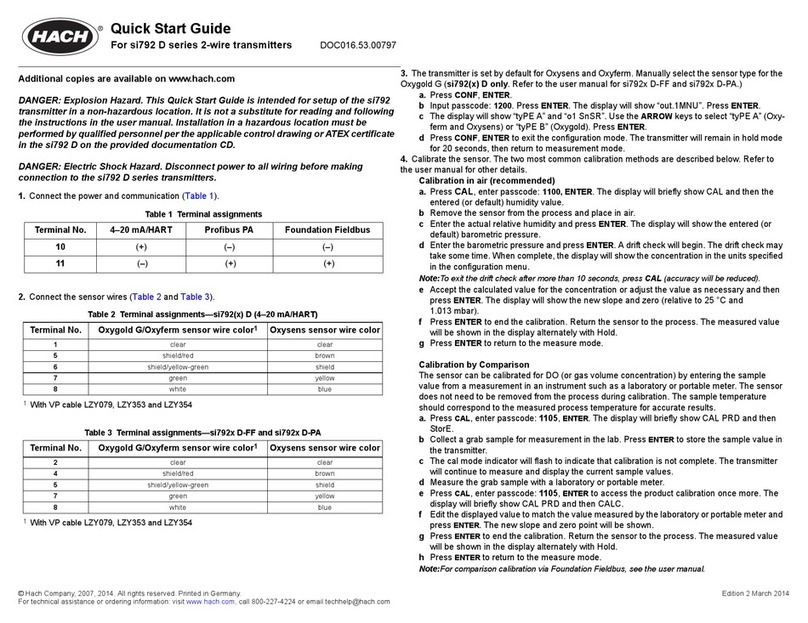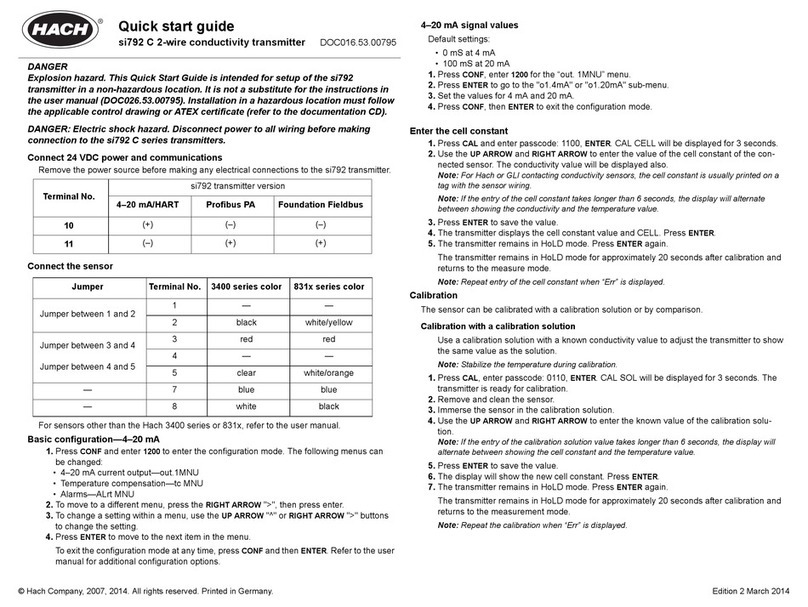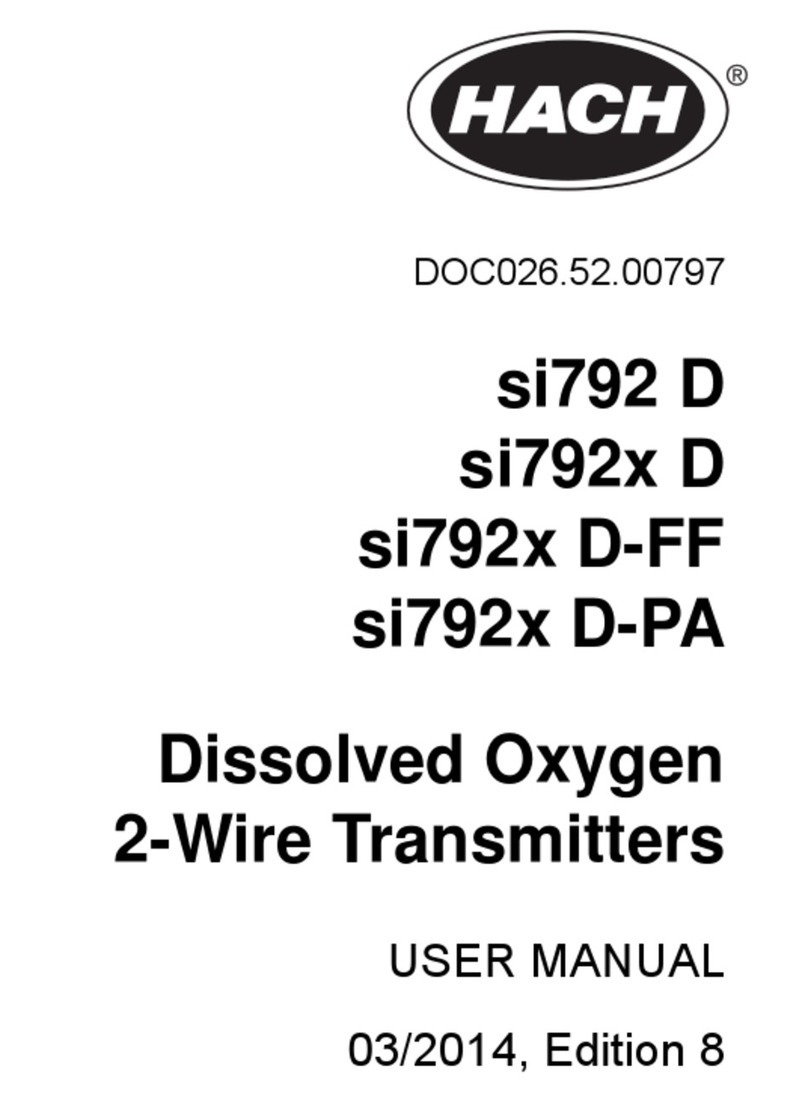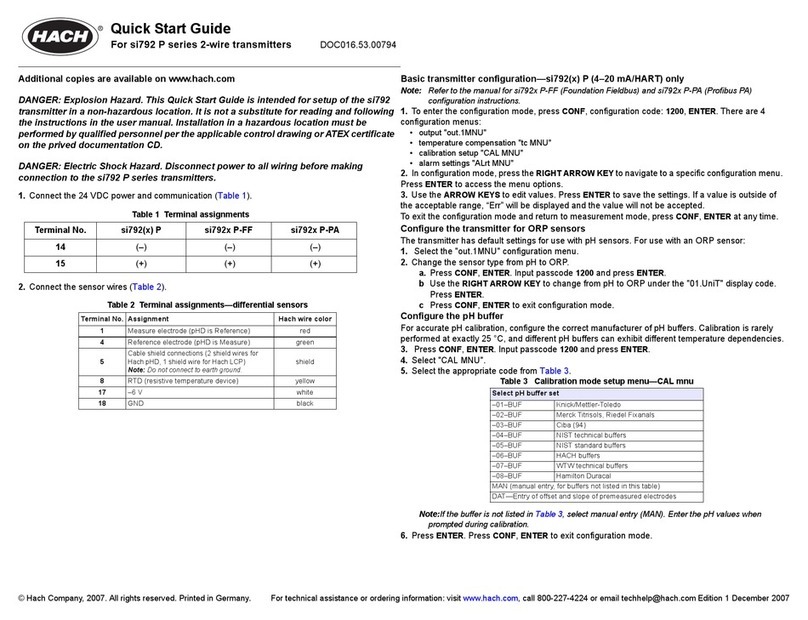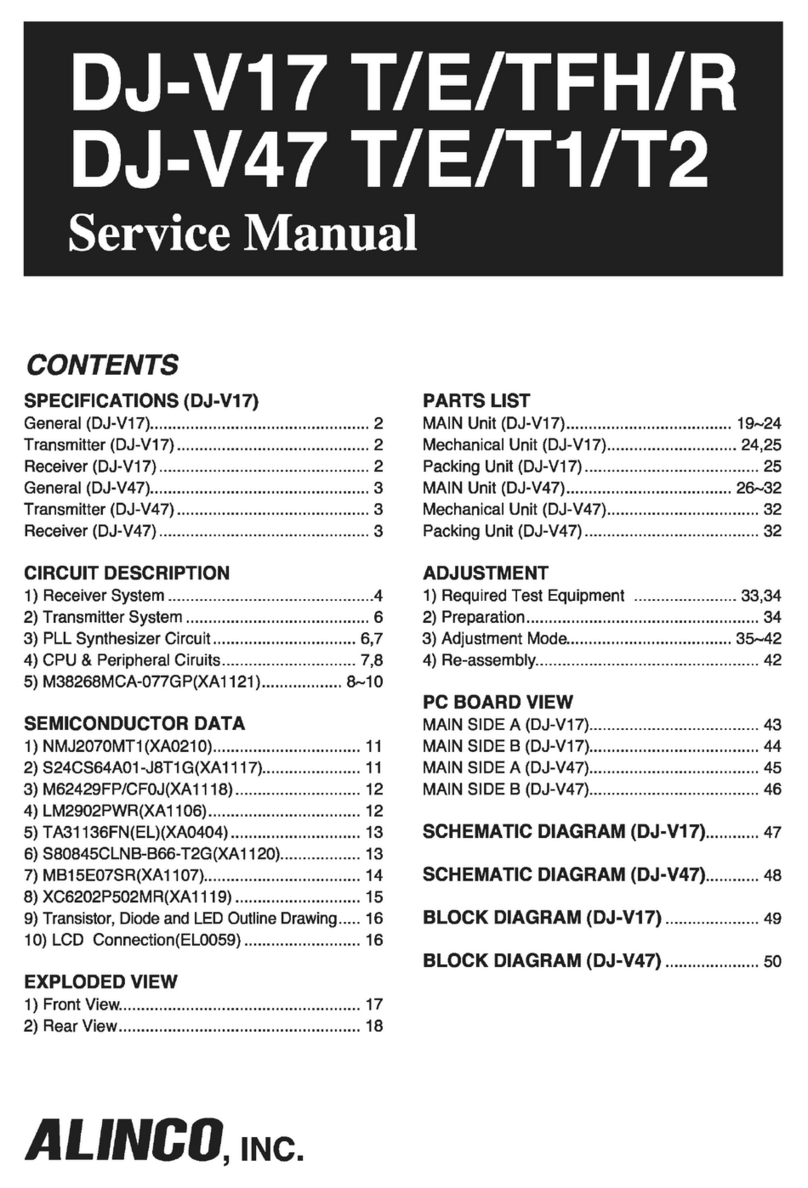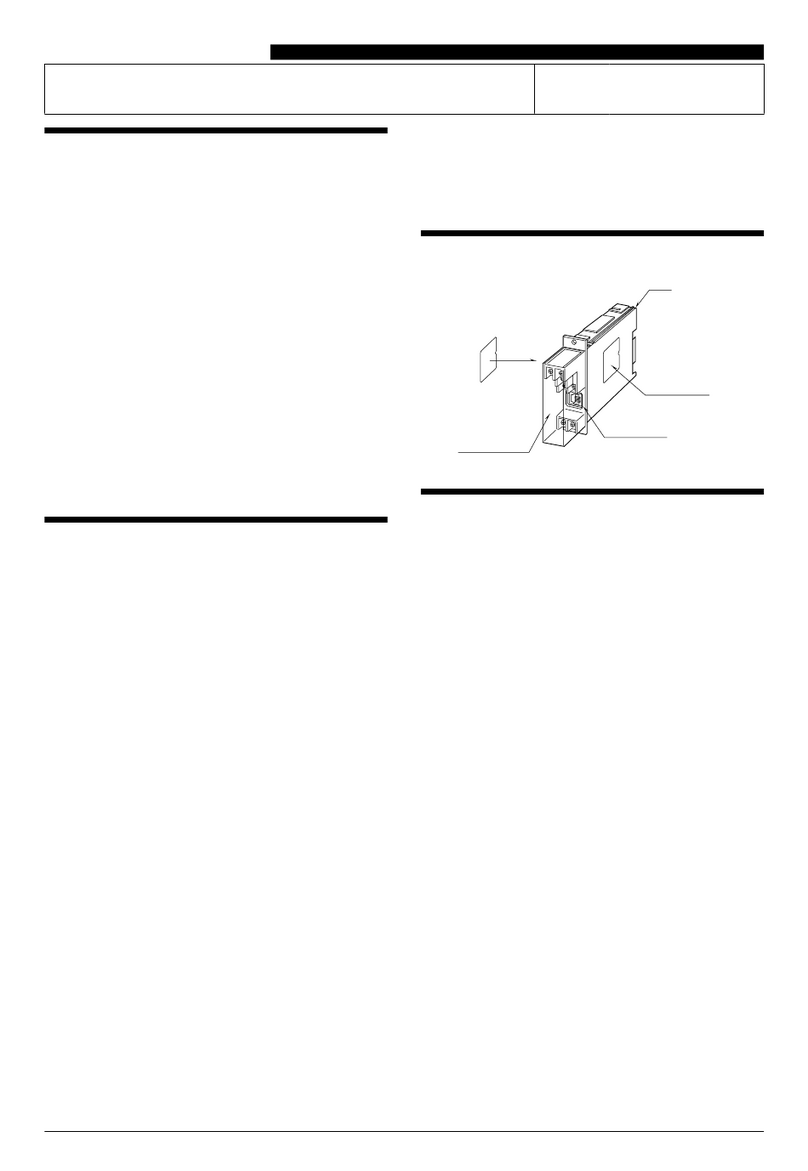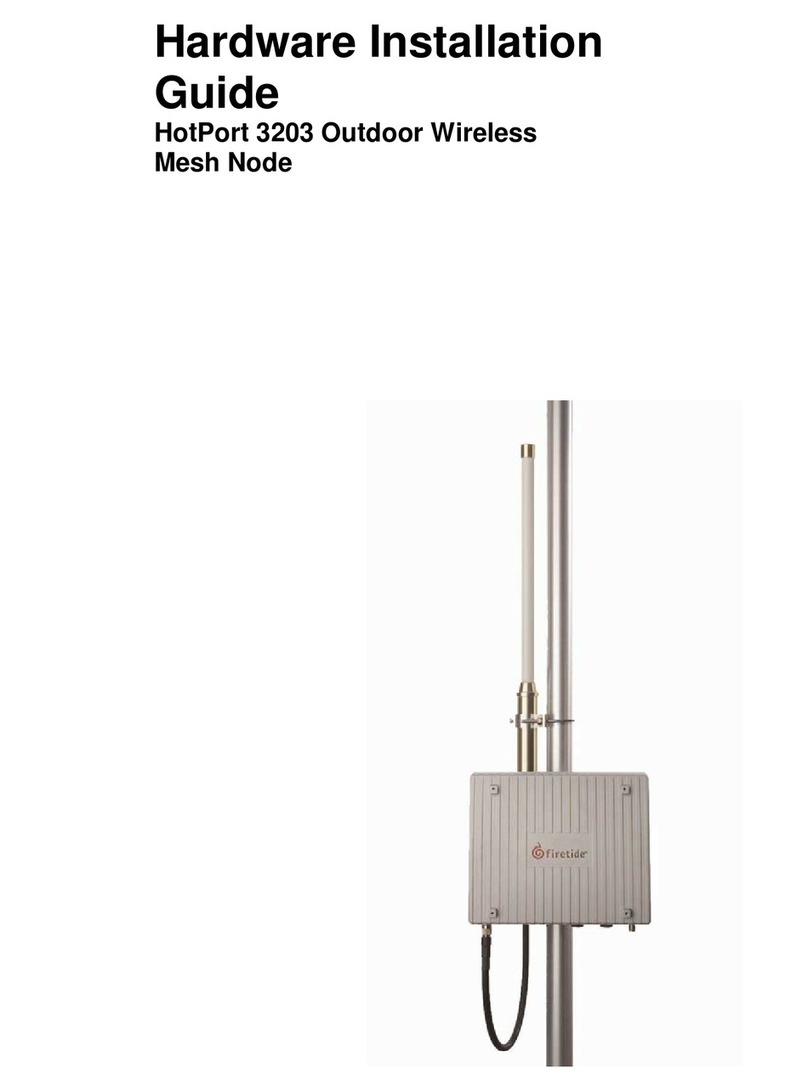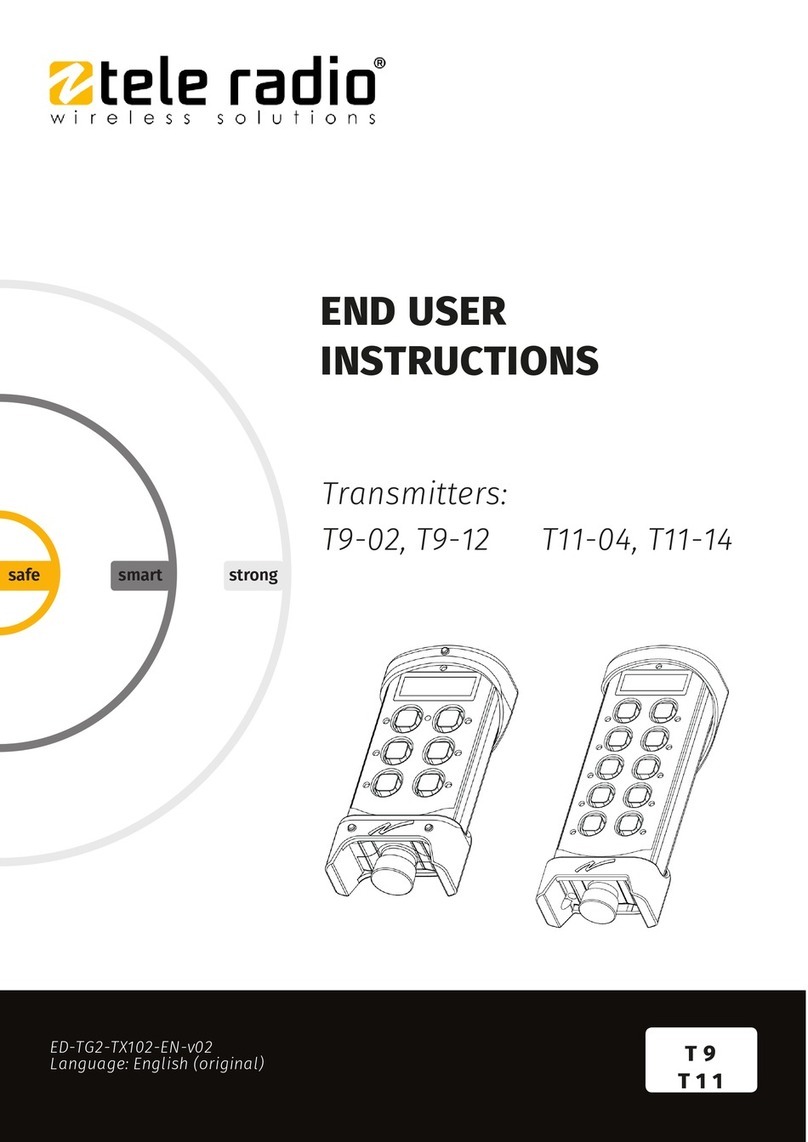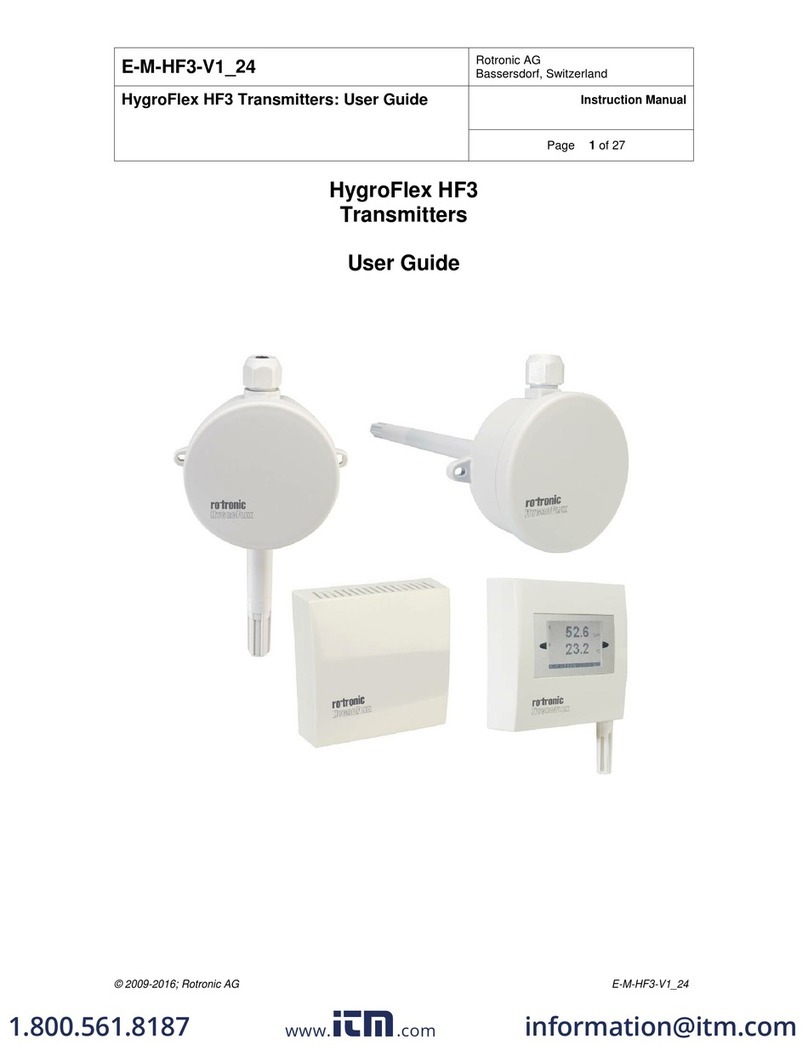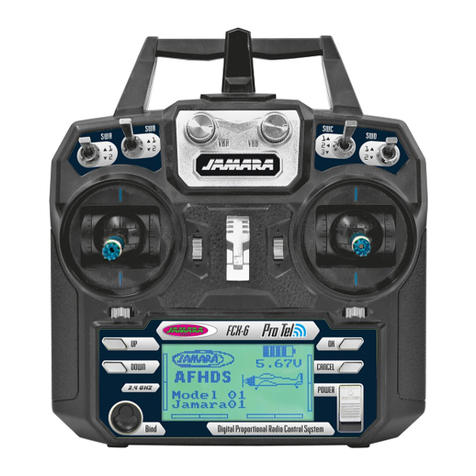
Table of Contents
2
Section 4 Interface and navigation ..................................31
4.1 si792(x) E/T (4–20 mA/HART) interface...................................31
4.2 si792x E/T-FF and si792x E/T-PA interface .............................32
4.3 Display......................................................................................33
Section 5 Operation—4–20 mA/HART............................35
5.1 Measure mode ......................................................................... 35
5.2 Configuration ............................................................................ 35
5.2.1 Current output configuration..............................................36
5.2.1.1 Time constant of output filter......................................39
5.2.1.2 Output signal during errors.........................................39
5.2.1.3 Output signal during HOLD ........................................ 40
5.2.2 Temperature compensation configuration.........................41
5.2.3 Alarm settings....................................................................42
Section 6 Operation—Foundation Fieldbus................43
6.1 Configuration ............................................................................ 43
6.1.1 Configuration steps ...........................................................43
6.1.2 Configuration menu........................................................... 44
6.2 Foundation Fieldbus communication........................................47
6.2.1 Standard resource block (RB)...........................................47
6.2.2 Standard analog input block (AI).......................................50
6.2.2.1 Operating modes........................................................50
6.2.2.2 Set the parameter and units.......................................50
6.2.2.3 Data processing ......................................................... 51
6.2.2.4 Alarms ........................................................................ 51
6.2.2.5 Bus parameters for the analog input block.................52
6.2.2.6 Cyclic measured value status.....................................55
6.2.2.7 Measured value limits—limit bits................................55
6.2.3 Transducer block...............................................................56
6.2.4 Calibration via Foundation Fieldbus..................................63
Section 7 Operation—Profibus PA................................... 65
7.1 Configuration ............................................................................ 65
7.1.1 Configuration steps ...........................................................65





